Explore all New Cars of 2024
-
Q.Order books open for second-gen Ford GT
125 Views Add Comment21 Comments Praveen | 8 years ago0
Praveen | 8 years ago0[USER="20"]NikilSJ[/USER] This is quite informative. I wonder why Citroen chose a boring looking wheel design after implementing such a revolutionary technology. Maybe they are trying to be discreet about it? Also, the amount of testing and development that has gone into the carbon wheels of GT 350 R feels way more interesting than the development of the whole car itself! :p
 Nikil | 8 years ago1
Nikil | 8 years ago1[QUOTE=Praveen;n10427][USER="20"]NikilSJ[/USER] Apparently, Koenigsegg is the first car manufacturer to make carbonfibre wheels. They use the prepreg- type carbonfibre in their One:1, where the fibre material is already impregnated into the epoxy resin and is partially cured. After the material is shaped, it is then cured using an autoclave or an oven. The advantage of pre-preg carbonfibre is that it offers phenomenal strength and resilience and is often used in aeronautical and aerospace industries. Koenigsegg's wheel are made up of a single carbonfibre unit and weighs just 6 kilos! Watch the video by /Drive on how the One:1's wheels are made: [video=youtube;PGGiuaQwcd8]https://www.youtube.com/watch?v=PGGiuaQwcd8[/video][/QUOTE] Apparently, Koenigsegg is not the first car manufacturer to make carbonfibre wheels! The first car that debuted carbonfibre wheels for rallying purposes was on a French car. This Citroen SM with CFRP wheels developed by Michelin won the 1971 Rally of Morocco. So it was basically the French who had the idea of making carbonfibre wheels and not the Swedes as believed. [IMG]https://upload.wikimedia.org/wikipedia/commons/thumb/e/ec/R%C3%A9tromobile_2011_-_Citro%C3%ABn_SM_Rallye_du_Maroc_1971_-_003.jpg/1024px-R%C3%A9tromobile_2011_-_Citro%C3%ABn_SM_Rallye_du_Maroc_1971_-_003.jpg[/IMG] The world's first mass produced carbonfibre wheels too were not produced by Koenigsegg. That claim lies with Carbon Revolution, an Aussie company, and Ford. Carbon Revolution is the first company to perfect the technology to make carbonfibre wheels. They are under a contract with Ford to supply carbonfibre wheels for the Mustang 350-R and Ferrari-fighter Ford GT. Ford heard about the start-up by chance three years ago and then started torture testing the wheels which included hitting pot holes at 100kmph to see if the wheels would shatter. Needless to say, these wheels passed the tests. Jake Dingle, chief executive officer of Carbon Revolution says, "No one has been able to do what we've been able to do. Even the aerospace industry couldn't figure out a way to do it." He seems to be a pretty confident man doesn't he. Both companies haven't revealed how much these wheels cost but expect it to be much more dearer than the regular alloy wheels. Ford Performance also put out a release saying [QUOTE]Ford Shelby® GT350R is the most track-capable Mustang ever and the first vehicle from a major automaker to offer carbon fiber wheels as standard equipment [LIST] [*] [*] [/LIST] With a little help from Space Shuttle technology, Ford helped reinvent the wheel. For the all-new Shelby® GT350R, the most track-ready road-going production Mustang ever, Ford dreamed of using the ultimate high-performance material for its unique wheels – carbon fiber. But while the automotive aftermarket and a low-volume supercar manufacturer have offered carbon fiber wheels, Ford and Australian supplier Carbon Revolution took on the challenge of crafting the first mass-produced, track-capable carbon fiber wheels as standard equipment for Shelby GT350R. Designed, developed and tested with the highest of quality standards in mind, these first-of-a-kind wheels deliver unprecedented chassis performance, massive weight savings and improved driving dynamics. In early testing with benchmark vehicles, prototype wheels showed significant potential – improving suspension response times, chassis dynamics, steering feel and ride quality. When the decision was made to pursue this technology for use in a production vehicle, the engineering team was challenged to develop a wheel that met Ford’s strict standards for durability, quality, craftsmanship and premium finish. Why carbon fiber?Among sports car enthusiasts, carbon fiber wheels are on the short list of dream components for high-performance vehicles. In the rarefied world of supercars only Koenigsegg has offered optional carbon fiber wheels. Lowering overall curb weight in general is beneficial to a car’s dynamics, but a reduction in unsprung weight (those components not supported by the suspension) can have a significant impact on handling and performance. Less unsprung weight helps vehicles start, stop and turn faster by reducing wheel rotational inertia, dramatically improving response time to driver input. Lower unsprung weight also translates to suspension components not having to work so hard to keep the tires in contact with the road over undulating or broken surfaces. Developing new benchmarks Although Carbon Revolution has been the leading manufacturer of carbon fiber wheels, both Ford and the supplier recognized significant innovation was needed to meet Shelby GT350R program needs. This project would set the standard for mass-produced carbon fiber wheels. Ford sets extremely high testing requirements for its wheels. Ford wheels must endure tests that include curb strikes, UV and chemical exposure, and extreme heat durability testing. The GT350R wheels would need to fulfill all of these demands in order to proceed to production. A common misconception of carbon fiber is that while it’s strong, it’s also a brittle material. Some formulations may have this characteristic, but carbon fiber’s durability is a feature of the type of resin and design intent of the part. The wheels of Shelby GT350R are designed to be stiff, light and resilient. One of the most severe tests for wheels in the Ford development process involves striking a curb at speed – a test that, without proper design, can cause serious wheel and tire damage. Because of the light weight, advanced construction methods and resins in the wheels, along with the highly-developed MagneRide dampers, the suspension was able to react so fast that the driver wasn’t sure the test had been carried out correctly and ran it twice to be sure. The suspension response was fast enough to greatly diminish the severity of the impact – that’s the power of minimizing unsprung weight. During track testing the extreme performance capabilities of the braking system developed heat which required the maximum technology available from Carbon Revolution. When brake temperature measurements were taken, it was revealed Shelby GT350R’s ultra-powerful brakes were creating rotor temperatures in excess of 900 degrees Celsius. As a result, the wheel design was elevated from a road car specification to a thermal standard more suitable for motorsports. For decades aerospace companies have treated turbine blade materials subject to extreme heat with ceramic coatings to help improve durability. The technology is also used in top-tier open-wheel racing environments. Athermal barrier coating system developed by Carbon Revolution uses this same technology. Created specifically for motorsport and aerospace applications where extreme temperature conditions are encountered, Carbon Revolution’s thermal barrier coating system uses a multistage, multimaterial coating formulation that provides an excellent thermal barrier. Using a plasma arc gun to liquefy a ceramic material, the wheels are coated at critical points around the inner wheel “barrel” and on the back of the spokes. The result is an incredibly thin, nearly diamond-hard coating that reliably shields the resin from heat – reducing maximum wheel temperatures and allowing continuous track use by even the most aggressive drivers. But that’s not the end of the story with regard to testing. Upon extreme exposure to harsh UV environments, corrosive salts and road chemicals, it became apparent that to achieve the durability required by Ford, a special coating would need to be developed to protect the resin from the environment. Carbon fiber parts are notoriously challenging when it comes to delivering a flawlessly smooth painted surface – the kind of finish Ford demands for all of its vehicles. Several proprietary new processes were developed that resulted in a robust, high-gloss black finish that not only looks good, but ensures a long life for the wheels. Produced to high standards – tested to ensure qualityManufacturing carbon fiber wheels begins with the creation of the preformed internal carbon structure, composed of precisely manufactured carbon strands arrayed into woven fabrics. The elements are then placed into a mold using state of the art manufacturing techniques. An RFID chip with a unique tracking number is embedded in this structure, and each wheel is individually entered into a quality assurance system. Once this structure is assembled, it’s infused with resin and cured at high temperatures. This process results in a one-piece wheel that ensures maximum strength – eliminating the need to bond or glue the wheel’s spokes and barrel components together. As the wheel cures, 61 individual checks and more than 246,000 data points are logged before it’s released from the machine. To guarantee quality parts, the cured wheels are analyzed using a 3D computerized tomography (CT) imaging process in which more than 18,000 X-ray images are taken. If the wheel passes inspection, it undergoes machining for the valve stem and mounting hardware holes before it gets painted, coated, assembled, dimensionally checked and shipped to Flat Rock Assembly Plant for installation on a new Shelby GT350R Mustang. Superior performanceThat the new Ford Shelby GT350R Mustang will be rocketship-fast should come as no surprise, but by cutting the weight of each wheel nearly in half compared to an equivalent aluminum wheel (18 pounds versus 33 pounds), handling and acceleration performance see serious benefits. The wheels also provide a reduction in rotational inertia of more than 40 percent, which positively impacts acceleration and braking performance. The wheels are so light, the springs and MagneRide dampers had to be recalibrated because the suspension can respond considerably faster to road inputs. “The GT350R wheels and tires were developed to be the most track-capable parts we’ve ever produced,” said Adam Wirth, chassis supervisor, Ford Performance. “The carbon fiber wheels reduce vehicle weight by 60 pounds compared to aluminum, yet are stiffer for better steering response. “We believe this is a game changer for the industry,” he added, “a great example of improved performance through innovation.” [/QUOTE]
 Nikil | 8 years ago0
Nikil | 8 years ago0After initially deciding that they would only make 500 units of the GT over next two years, Ford has now decided that it will increase the production to four years. This could be because of the overwhelming applications it received. Ford says they received 7,000 applications for a car whose production run was supposed to be limited to 500 cars or250 cars a year. Though Ford hasn’t given out an official number, this decision effectively means that the American car maker will make close to 1,000 units of the supercar. Dave Pericak, global director of Ford Performance said, While we can’t build enough Ford GTs for everyone who has applied, we are going to produce additional vehicles in an effort to satisfy more of our most loyal Ford ambassadors We want to keep the Ford GT exclusive, but at the same time we know how vital this customer is to our brand”. Well said, Dave. According to the new plan, year three of production will support applicants who were placed on the wait list. Applicants who were rejected earlier and those who missed out the first time can apply again in early 2018. Those who applied the last time around, meanwhile, will only need to update their request.
 Praveen | 8 years ago0
Praveen | 8 years ago0This aero testing video of the Ford GT is oddly satisfying. Check it out! [video=youtube;-0hK7R6qSXU]https://www.youtube.com/watch?v=-0hK7R6qSXU[/video]
 Praveen | 8 years ago0
Praveen | 8 years ago0[USER="20"]NikilSJ[/USER] Unfortunately, this is not the one. but it has most of the cars featured in this book, barring a few. Plus, it was a mix of cars from all over the world. Not seggregated like the ones above. I'll check and let you know. :D
 Nikil | 8 years ago0
Nikil | 8 years ago0[USER="40"]Praveen[/USER], I think the book you are talking about is called "Future Classics" by Alexander Corne. [IMG]http://2.bp.blogspot.com/-FVCu-UFnDhY/TtWK4jmqs2I/AAAAAAAAPsE/pnAvbx-SgEg/s640/CIMG3251.JPG[/IMG][IMG]http://2.bp.blogspot.com/-utRPBsXN3gA/TtWK_30GFJI/AAAAAAAAPsM/sMhK_x1zQz0/s640/CIMG3252.JPG[/IMG] The cover may have been different though. My copy had a light blue cover with the picture of Ferrari Testarossa, Lambo Diablo and a Porsche. [IMG]http://mla-s1-p.mlstatic.com/4057-MLA107280261_7429-O.jpg[/IMG] I got this when I was in my 7th standard. Have read it over and over again. One of my prized possessions for sure.
 Praveen | 8 years ago0
Praveen | 8 years ago0[USER="20"]NikilSJ[/USER] Oh, I did not know it's limited because of that. Guess that makes sense, then. I remember the GT 40 when I first read about it in a book. And yes, there was this article written about how the GT40 used to beat Ferraris and Porsches back in the day. I don't remember the name of the book, though. But it had all the legendary cars like the Ford GT40, Ferrari F40, Plymouth Road Runner Superbird, McLaren F1, Ferrari 550 Maranello and the likes! That book got me completely hooked me up to the world of supercars.
 Nikil | 8 years ago0
Nikil | 8 years ago0[USER="40"]Praveen[/USER], the reason why Ford has limited production of the GT is because it is not meant to be a mass market supercar. They built this to celebrate the 100th anniversary of Ford Motor Company and the 40th anniversary of the legendary GT40s winning streak at the 24 Hours of Le Mans. So I guess they have the right to do that and just give them to loyal Ford customers. At least Ford is not doing a Bugatti here. The French car maker, in the last so many years I can't even remember, kept promising that they will stop production of the Veyron. Instead, all they did was keep creating one special edition model after the other that it feels like it is not exclusive anymore and if you remember, even Porsche built just 400 units of the Carrera GT (you know how many of them have crashed so far!). Yes, the replica GTs use a naturally aspirated engine.
 Praveen | 8 years ago0
Praveen | 8 years ago0[USER="20"]NikilSJ[/USER] Looks absolutely sweet! I'd have one of these any day over the modern Ford GT. Ford made the GT unnecessarily exclusive. I personally don't think it is [I]that[/I] great to deserve such exclusivity. The engines in the GT replicas are naturally aspirated, right?
 Nikil | 8 years ago0
Nikil | 8 years ago0Didn’t make the list for the new Ford GT? Fret not, as there is now a company that will sell you a Superformance GT 40 at a fraction of the price of the new Ford GT. Le Mans Coupes Ltd, a UK-based company which builds, imports and sells iconic supercars from eons ago, has built some legit manufacturer-sanctioned replicas of the GT40. The cars are made with as much as 85 per cent parts replaceable with the originals’. The MKI and MKII models of the Superformance GT40 are up for sale in both left- and right-hand drive modes along with a choice of power plants ranging from 5.6- to 7.0-litre petrol V8s that produce outputs ranging from 430 to 560PS. Here's a couple of pictures for you to drool over: [ATTACH=CONFIG]n11428[/ATTACH][ATTACH=CONFIG]n11429[/ATTACH][ATTACH=CONFIG]n11430[/ATTACH][ATTACH=CONFIG]n11431[/ATTACH][ATTACH=CONFIG]n11432[/ATTACH] That’s not all. If the Ford GT is not your thing, they also sell replicas of the Shelby Cobra called the Superformance MKIII, Corvette Grand Sport and Shelby Daytone Cobras too. The Superformance GT40 Mk I and Mk II Continuations is hand-buit by Hi-Tech on the same production line as the Noble M12 GT in their South African facility. The body comprises of a pressed steel roof, GRP composite body, bonnet, doors and boot. [ATTACH=CONFIG]n11433[/ATTACH][ATTACH=CONFIG]n11434[/ATTACH][ATTACH=CONFIG]n11435[/ATTACH][ATTACH=CONFIG]n11436[/ATTACH][ATTACH=CONFIG]n11437[/ATTACH][ATTACH=CONFIG]n11438[/ATTACH][ATTACH=CONFIG]n11439[/ATTACH] Here are the drool-worthy specs for the nut in you: [B]Chassis:[/B] Steel monocoque chassis to original specification including steel roof section. [B]Body:[/B] (MkI or MkII option) GRP composite front clip, rear clip and doors, incorporating roof top air vents on MkII version. Glass front windows, lexan side windows with vents and optional driver's side 'Gurney' bubble. Original 'Hartswell' door latches and catches. Original front and rear light clusters. Paint: Base coat clear coat in a variety of colours. [B]Interior:[/B] Period style instrument panel fitted with 'Smiths' gauges. Right hand mounted gear lever for right hand drive cars. Original style seats with silver rivets, interior carpeting. Cockpit ventilation via de-mister vents and air conditioning. [B]Engine:[/B] ROUSH built blueprinted road race engines incorporating: Forged crankshaft and forged H beam connecting rods. Aluminium Roush CNC ported cylinder heads. [B]Sizes available:[/B] 5.6-litre / 6.6-litre / 7.0-litre [B]Fuel system:[/B] Twin sill mounted stainless steel baffled fuel tanks. [B]Exhaust system:[/B] Original 'bundle of snakes' style exhaust system incorporating catalysts. [B]Transaxle:[/B] Original style 5-speed RBT ZF or the new stronger RFQ. [B]Steering:[/B] Right or left hand drive with 'as original' steering wheel. [B]Brakes:[/B] 'Willwood' super light brakes with adjustable pedal box. [B]Suspension:[/B] Fully independent and fully adjustable front and rear. [B]Front:[/B] Unequal wishbone design with coil-over shock absorbers. [B]Rear:[/B] Bottom wishbone top link twin trailing arm with coil-over shock absorbers. [B]Wheels:[/B] 'Halibrand' style for MkII or BRM type for Mk1. [B]Sizes:[/B] 8" x 15" front, 10" x 15" rear. [B]Tyres:[/B] Avon ZZR or Yokohama Avid. [B]Sizes:[/B] 225x60x15 front, 295x50x15 rear. [B]Warranty:[/B] 1 year full - car and gearbox; 2 years - engine. [B]Power Options:[/B] From 430 bhp to 580+ bhp. [U][B]Performance:[/B][/U] [B]Acceleration 0 - 100 kmph:[/B] 3.7 secs* [B]Standing 1/4 mile:[/B] 11.2 secs* [B]Maximum speed:[/B] 330+ kmph* * Estimated figures.
 Motu | 8 years ago0
Motu | 8 years ago0[QUOTE=NikilSJ;n10494][USER="18"]MotuSid[/USER] and [USER="40"]Praveen[/USER] am I the only one who likes blue?[/QUOTE] I like blue too, can't you see the blue stripes on my car?
 Nikil | 8 years ago0
Nikil | 8 years ago0[USER="18"]MotuSid[/USER] and [USER="40"]Praveen[/USER] am I the only one who likes blue?
 Praveen | 8 years ago1
Praveen | 8 years ago1[USER="20"]NikilSJ[/USER] [USER="18"]MotuSid[/USER] Btw, this is my build, aka the Batmobile :P [ATTACH=CONFIG]n10449[/ATTACH] [ATTACH=CONFIG]n10450[/ATTACH]
 Praveen | 8 years ago0
Praveen | 8 years ago0[USER="18"]MotuSid[/USER] Hahaha!! I feel ya bro. I used to do the same with Harley Davidson! The US website has a feature called build your motorcycle. A great time killer it is! The Indian website is shitty though. All you can do is change colours and wheels. But the US one has the option of customising colours, wheels, windshields, saddlebags, and other accessories!
 Motu | 8 years ago1
Motu | 8 years ago1[IMG]https://i.kinja-img.com/gawker-media/image/upload/s--Ht263PoZ--/c_scale,fl_progressive,q_80,w_800/ivex7zbvxzydyf7juz2q.jpg[/IMG] This is how my own Ford GT would look like - If I had the money to buy and customise one. SIGH! Dammit [USER="20"]NikilSJ[/USER], now i'm going to waste a considerable amount of time [IMG]https://media.giphy.com/media/Qirsfuy8ZwxG/giphy.gif[/IMG]
 Praveen | 8 years ago1
Praveen | 8 years ago1[USER="20"]NikilSJ[/USER] Apparently, Koenigsegg is the first car manufacturer to make carbonfibre wheels. They use the prepreg- type carbonfibre in their One:1, where the fibre material is already impregnated into the epoxy resin and is partially cured. After the material is shaped, it is then cured using an autoclave or an oven. The advantage of pre-preg carbonfibre is that it offers phenomenal strength and resilience and is often used in aeronautical and aerospace industries. Koenigsegg's wheel are made up of a single carbonfibre unit and weighs just 6 kilos! Watch the video by /Drive on how the One:1's wheels are made: [video=youtube;PGGiuaQwcd8]https://www.youtube.com/watch?v=PGGiuaQwcd8[/video]
 Nikil | 8 years ago0
Nikil | 8 years ago0Let’s talk more about the Ford GT. The iconic supercar, in it’s second generation now, has garnered over 6,500 bookings. Ford is now reviewing the applications it has got over the past month. But most importantly, it comes with the option of carbon fibre wheels. And boy oh boy do they look gorgeous. [ATTACH=CONFIG]n10348[/ATTACH] The optional carbon fibre wheels measures 8.5 inch x 20 inch upfront and 11.5 inch x 20 inch at the rear. They weigh almost a kilo less than the standard forged aluminium wheels. And this, Ford says, reduces inertia by 25 per cent. [ATTACH=CONFIG]n10349[/ATTACH] Ford also says these wheels will “improve consistent road contact, aid traction, improve steering feel and handling and even provide efficiency improvements.” These wheels also make it quieter inside the cabin thereby aiding comfort and refinement. [ATTACH=CONFIG]n10350[/ATTACH] [QUOTE] “Ford was the innovator as the first to offer mass-produced carbon fibre wheels as a standard offering on Shelby GT350R Mustang,” said Dave Pericak, Ford Performance global director. “Now, Ford GT will offer the next generation in carbon fibre wheels, with an advanced resin and fibre technology that gives our designers more freedom, while also showcasing the structure of the material’s weave.” - [B]Source: Top Gear UK[/B] [/QUOTE] [ATTACH=CONFIG]n10351[/ATTACH]
 Praveen | 8 years ago10
Praveen | 8 years ago10[USER="20"]NikilSJ[/USER] The guy who named the interiors and the colors deserves a medal, man... Also, check this GT out! It is called Bad GT tuned to whip out around 1700 bhp and it is street legal! Apparently, this is the fastest street legal car to finish the standing mile at a mind-bending 283.232 MPH! That is, around 455 kmph! Crazy or what! The supercharger was swapped with a twin turbo and of course, the stock engine was modified. However, i'm not sure about the extent of modification. The car has stock air conditioning and the interior is completely usable. Also, it does the quarter mile in nine seconds. Here's a video by tuning dose! [video=youtube;04MqvpEZ8_E]https://www.youtube.com/watch?v=04MqvpEZ8_E[/video]
 Nikil | 8 years ago0
Nikil | 8 years ago0Watch this to get up close and personal with the Ford GT! [video=youtube;LJvTT14_Obc]https://www.youtube.com/watch?v=LJvTT14_Obc[/video]
 Nikil | 8 years ago0
Nikil | 8 years ago0The Ford GT was developed primarily for the track. Not any track, mind. It was developed to compete at the 24 Hours of LeMans endurance race. Here's a video explaining why and how the Ford GT evolved from a concept to a proper supercar. [video=youtube;7VXYKnkGRPA]https://www.youtube.com/watch?v=7VXYKnkGRPA[/video]
View More Comments Nikil | 8 years ago2
Nikil | 8 years ago2The last generation of the iconic Ford GT is one of my favourite supercars of all time, right alongside the Ferrari F40 and Porsche Carrera GT. When Ford finally announced that they were building a new version to mark the 50th anniversary of the GT40 winning the prestigious 24 Hours of LeMans in 1966, I just couldn’t contain my excitement. [ATTACH=CONFIG]n8385[/ATTACH] Unveiled at the 2015 Detroit Motor Show, the Ford GT stole the show with its well-executed design and plans to enter it in the 24 Hours of LeMans in 2016. The new Ford GT employs a full-carbon-fibre construction bolted on to an aluminium subframe front and rear. It also comes with active aerodynamics to make it super quick. The GT for 2017 “engineered to keep company with exotics, as the Detroit-based car maker says modestly, will be powered by a brand-new 3.5-litre twin-turbocharged EcoBoost V6 petrol engine capable of producing over 600bhp. The Ford GT will set you back a whopping $450,000 or Rs 2.98 crore (excluding import duties and local taxes). [ATTACH=CONFIG]n8386[/ATTACH] Now, Ford has finally started taking orders for the 2017 GT. It will be limited to a total of 500 units only. To make sure the Ford GT goes only to the deserving, the American carmaker has come up with a system (like Ferrari’s) to vet potential customers. [ATTACH=CONFIG]n8387[/ATTACH] Ford will be using a web-based form to be filled out and sent to them for consideration. The criteria for selection depends on a number of factors like the number of Ford cars owned in the past, whether the customer owned a last-generation Ford GT and even questions like if customer will be driving the GT on a regular basis and not start it away in a garage like a collector’s item. Pretty good vetting process I must say. [ATTACH=CONFIG]n8388[/ATTACH] Can’t afford the Ford GT, well you can always play around with this [URL="https://www.ford.com/performance/gt/"]online configurator[/URL] to build the car of your dreams. The Ford GT is available in 8 shades (Frozen White, Ingot Silver, Liquid Grey, Liquid Blue, Liquid Red, Triple Yellow and Matte Black) with the option of a racing stripe (Frozen White, Shadow Black, Ingot Silver, Alloy, Lightning Blue, Race Red and Competition Orange). The lower portion of the Ford GT can be had in Shadow Black, Matte Carbon Fibre or Gloss Carbon Fibre. Wheel options include 20” One-Piece Forged-Aluminium in three shades (Graphite with Black Lug Nuts, Gloss Black with Black Lug Nuts or Silver with Chrome Lug Nuts) or a 20” Carbon-Fibre wheels finished in either Matte or Gloss finish. Brake callipers can be painted either black, silver, blue, red or orange. Interior trim includes Dark Energy (all-black), Launch Control (red trim on Dashboard and Seat Bolsters), Light Speed (blue trim on Dashboard and Seat Bolsters) or Re-Entry (white trim on Dashboard and Seat Bolsters) [ATTACH=CONFIG]n8389[/ATTACH] [ATTACH=CONFIG]n8390[/ATTACH] [ATTACH=CONFIG]n8391[/ATTACH]
 Add your Comment
Incorrect word(s) in your text, please rectify Submit Comment
Add your Comment
Incorrect word(s) in your text, please rectify Submit Comment
From The Community
-
Q. Is Hero impulse available in Bangalore or Disconti ...
 Asked by Nagaraj Maddodi
8 Answers
Asked by Nagaraj Maddodi
8 Answers
-
Q. I am from middle class family should i buy the kt ...
 Asked by Knight Rider
8 Answers
Asked by Knight Rider
8 Answers
-
Q. Is it gold colour available. - Activa 4G?
 Asked by Radha Krishna
56 Answers
Asked by Radha Krishna
56 Answers
-
Q. What is the top speed of enfield classic 350
 Asked by Tarun Sundar
118 Answers
Asked by Tarun Sundar
118 Answers
-
Q. Does it have radiater or any cooling system - R15 ...
 Asked by Balamuralikrishnan
4 Answers
Asked by Balamuralikrishnan
4 Answers
-
Q. Hello sir street rod or z650 for city commute?
 Asked by Arc Academics
4 Answers
Asked by Arc Academics
4 Answers
-
Q. Hi, What is the difference in Wagnor vxi and vxi p ...
 Asked by Mohit Datasec
15 Answers
Asked by Mohit Datasec
15 Answers
-
Q. Is the spoiler fitted with wagon r vxi+ optional?
 Asked by Shyamal Deka
4 Answers
Asked by Shyamal Deka
4 Answers
-
Q. I am confused which one is better vxi or vxi+ sinc ...
 Asked by Amit Rai
3 Answers
Asked by Amit Rai
3 Answers
-
Q. Is abs system available in wagon r vxi amt?
 Asked by Jiten Sarma
4 Answers
Asked by Jiten Sarma
4 Answers
Topics you might be interested in
-
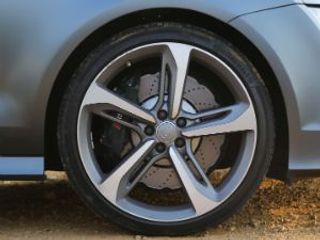 Car Care Guide: Brakes26 Jun, 2014 | By Team ZigWheels
Car Care Guide: Brakes26 Jun, 2014 | By Team ZigWheels -
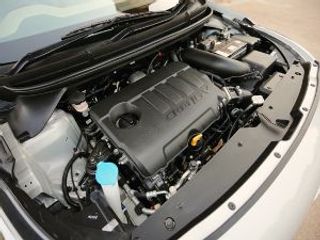 Rat Protection11 Sep, 2014 | By Team ZigWheels
Rat Protection11 Sep, 2014 | By Team ZigWheels -
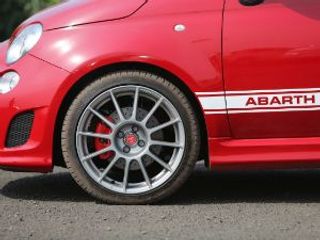 Car Care Guide: Tyre Care26 Jun, 2014 | By Team ZigWheels
Car Care Guide: Tyre Care26 Jun, 2014 | By Team ZigWheels -
 Parking Tips27 Jun, 2014 | By Team ZigWheels
Parking Tips27 Jun, 2014 | By Team ZigWheels -
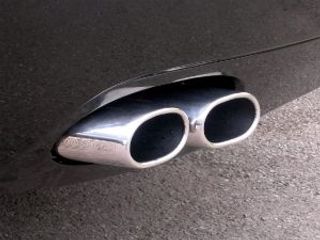 Performance Exhausts5 Sep, 2014 | By Team ZigWheels
Performance Exhausts5 Sep, 2014 | By Team ZigWheels
Latest Car & Bike Updates
-
 Reserve The 2023 Tata Nexon EV Facelift From Today!9 Sep, 2023 | By Team ZigWheels
Reserve The 2023 Tata Nexon EV Facelift From Today!9 Sep, 2023 | By Team ZigWheels -
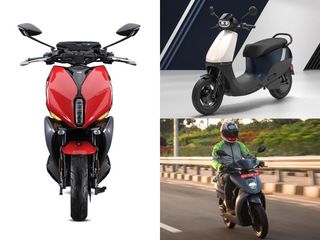 World EV Day 2023: All The Electric Two-wheeler Launching This Year Itself9 Sep, 2023 | By Team ZigWheels
World EV Day 2023: All The Electric Two-wheeler Launching This Year Itself9 Sep, 2023 | By Team ZigWheels -
 These Are Top Automotive Headlines Of The Week9 Sep, 2023 | By Team ZigWheels
These Are Top Automotive Headlines Of The Week9 Sep, 2023 | By Team ZigWheels -
 Here’s What The New Base Era Variant Of The 2023 Hyundai i20 Facelift Packs10 Sep, 2023 | By Team ZigWheels
Here’s What The New Base Era Variant Of The 2023 Hyundai i20 Facelift Packs10 Sep, 2023 | By Team ZigWheels -
 Get Ready For The Four-cylinder 400cc Screamer From Kawasaki10 Sep, 2023 | By Team ZigWheels
Get Ready For The Four-cylinder 400cc Screamer From Kawasaki10 Sep, 2023 | By Team ZigWheels
Recommended Videos
-
Royal Enfield Scram 411 vs Himalayan: Which Is The Right Bike For You? | ZigWheels 29 Mar, 2022 7749 views
-
Oben Rorr EZ First Ride Review | Convenient Commuting | ZigWheels 18 Nov, 2024 1808 views
-
Maruti Dzire 2024 Review: Safer Choice! Detailed Review 13 Nov, 2024 8508 views
-
Skoda Kylaq Drive, Interior, Space, Boot Detailed | Polo GT Back As A Skoda? | ZigAnalysis 10 Nov, 2024 9724 views
-
2024 Audi RS Q8 Performance Drive | The Ultimate Supercar! 9 Nov, 2024 8824 views
Trending Discussions
- TVS RAIDER BLUTOOTH VARIANT
- Comparition Fazer 25 Vs Classic 350 – Which has a Better Engine Efficiency?
- test
- Abhimanu yadav
- Milage Test survey
- Autoglam Car Accessories
- Review
- please change ' PRASANT HONDA' mobile no to 8116600365
- defective vehicle BMW X5 brand new car sun roof leakage
- Planning to purchase vw polo for long run i will be using the vehicle for more than 8 years .
Thanks for reporting this. The reported answer will be shortly removed from Zigwheels &
will be sent for moderation.
Choose your city
-
New Delhi
-
Bengaluru
-
Mumbai
-
Kolkata
-
Chennai
-
Pune
-
Hyderabad
-
Ahmedabad
-
Patna
Thank you! Your question has been submitted and is under moderartion.
You will receive all communications on :
Say a Car or a Bike Name

 Cancel
Cancel

